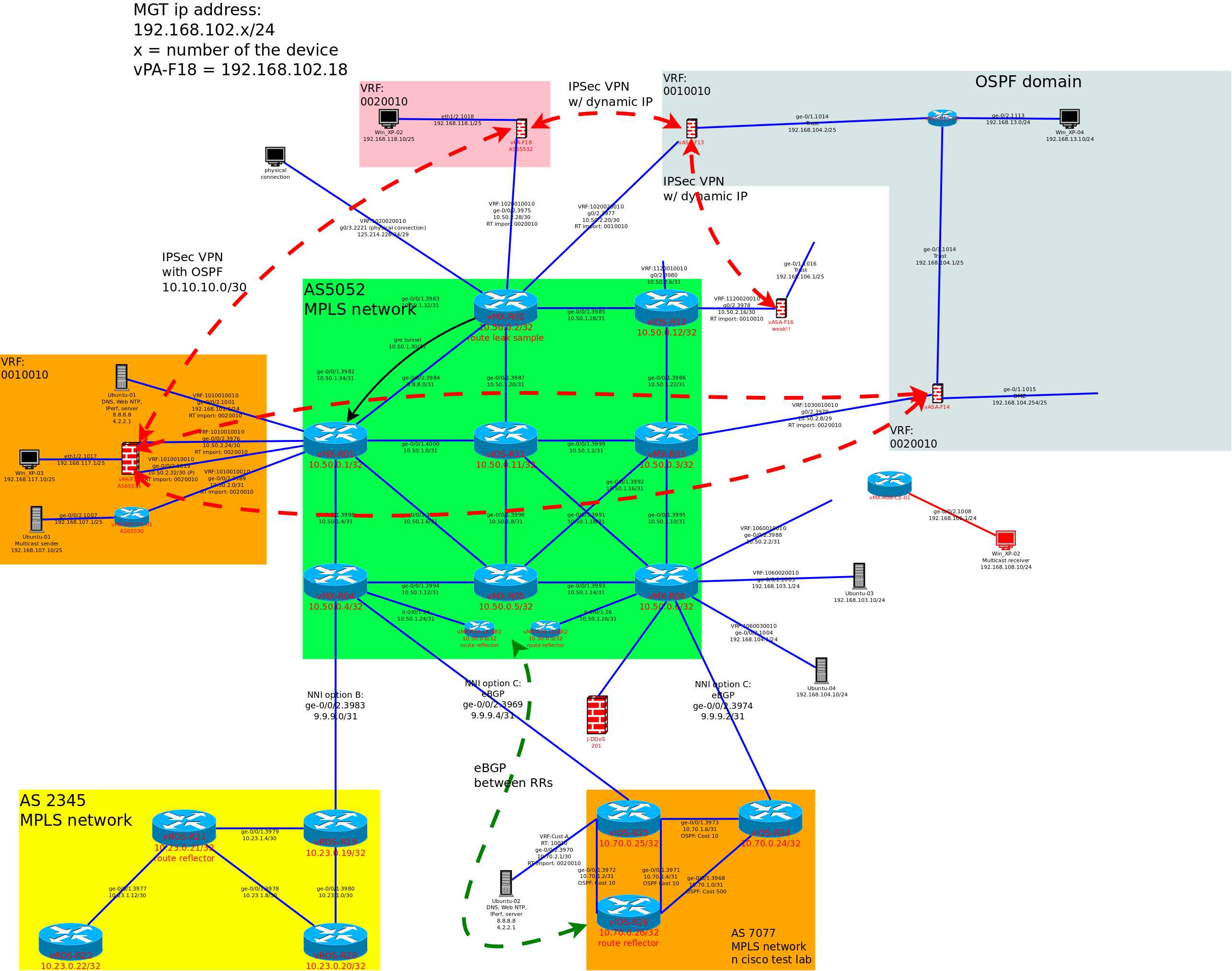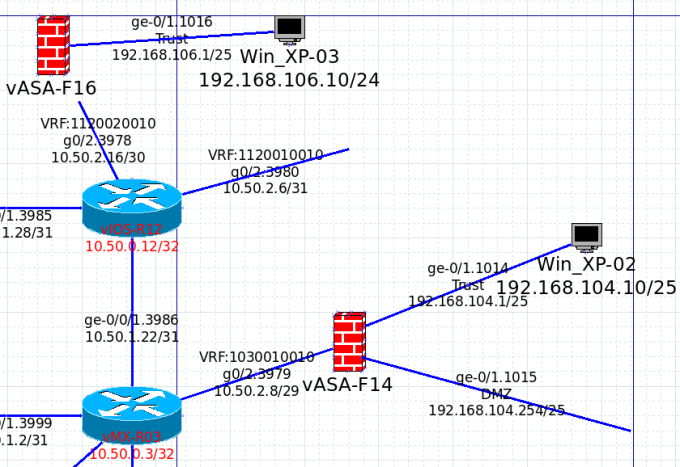It has been a while since I have done any labs after getting a new job. This time, I will be building a NNI option C using both Cisco IOS and Juniper MX. The reason I write this is because I do not find many resources on the internet about the inter AS connection using 2 different software at the same time. Hope this can be useful for anyone who is having the same struggle as i do.
(the AS# below are randomly picked!!)

Based on the lab diagram (dont feel like copping it up), as the internal VPN service is already running and the intra AS is running OSPF and LDP for MPLS, I will be connecting AS5052 (the green aren in middle) and AS7077 (the orange area at the bottom) together over NNIs to extend the MPLS VPN services.
Continue reading
Tag Archives: VRF
MPLS VPN – routes sharing between 2 different VRFs across the MPLS network
The beaut of MPLS VPN is to have multi tenants running over the same MPLS core network and each tenant are prevented to access other tenants networks. But what if the 2 different tenants want to connect to each other?
In the lab below, we have 2 different tenants and they are 1120020010 (RT:200010) in Router 12 and 1030010010 (RT:100010) in Router 03. By default, the ASAs connected to these VRFs cannot communicate since they are in 2 different VRF network. In this case, I will be using Cisco IOS and Juniper MX to let 2 different VRFs to connect together.

We could check the existing configuration and the route table in Router 03 and Router 12
Continue reading
MPLS – check the label switching path with Juniper Junos and Cisco IOS
How yall doing guys. It has been some times putting anything new to my blog. I think I will put some more materials that focus on troubleshooting wise stuffs. This time, I will present the way to check the label switching path or routing path of the MPLS VPN traffic that run on top of the OSPF and LDP protocols.
Here is the Topology. The lab is build with both Cisco IOS (C1000v) and JunOS. There is 2 subnets in the VRF which are 192.168.104.0/24 and 192.168.109.0/24 and they are located in the R3 and R10 respectively.

Continue reading